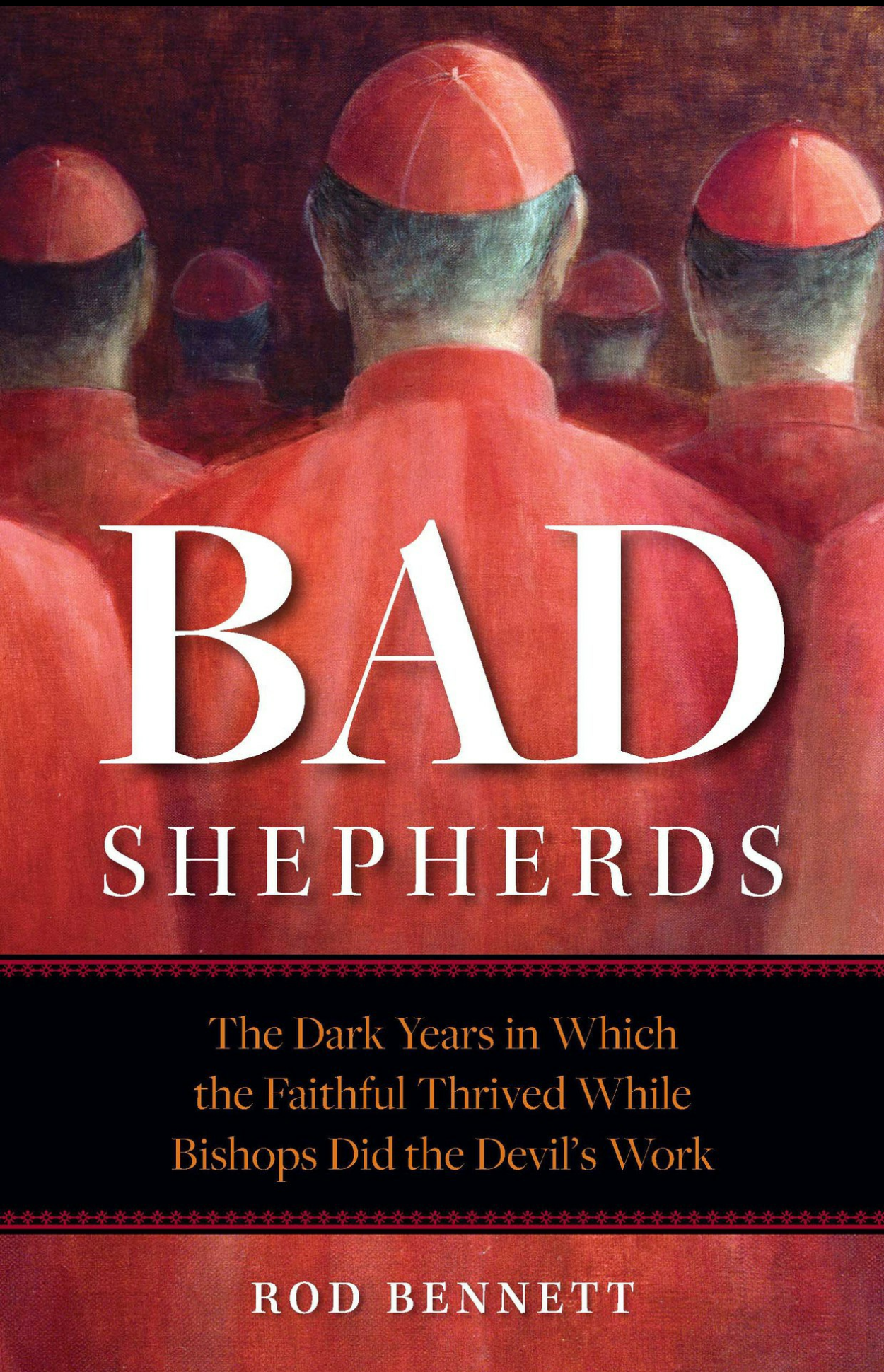“The arrival of the Black Death in Christendom — perhaps the most destructive pandemic in world history, which killed, by very reliable estimates, about half the population of Europe. In some areas the death toll may have been as high as 80 percent.
“It was a visitation upon a scale so enormous as to strike a blow at medieval society which might have dissolved it — and nearly did dissolve it. . . . In some places towns and villages sank never to rise again. . . . You may trace its effects even today in the half-finished buildings which were stopped dead and their completion never undertaken.”22
It’s no wonder many Catholics believed that Pestilence, the first of St. John’s Four Horsemen, had made his prophesied appearance (see Rev. 6).
One of the cruelest ironies about the Black Death is the way it contributed so heavily to the deterioration of the clergy. In what way? Imagine the workload for a priest: confessions, last rites, comfort to survivors, and Christian burial (when possible) from sunup to sundown for weeks, months, years on end. And though science did not yet know what caused the Black Death, everyone knew very well by common sense alone that whoever spent time around the plague usually died from it sooner or later. So the clergy who took the sacraments into the plague zones were spiritually akin to the firemen who ran toward the Twin Towers on 9/11 while everyone else was running away. The faithful bishop, the loyal priest, the dutiful deacon all ministered as long as they could, and then died. The cowards and deserters fled and survived — to become practically the whole clergy in the post plague years. No wonder the fifteenth century was such a dumpster fire.
As a direct result of this factor, the Faith itself got lost somewhere along the way — or adulterated, at any rate, by a nasty tincture of superstition. The plague shut down churches and monasteries, all the places where the real Christian Faith was meant to be taught (and had been for a long time, despite individual lapses).
Many of the clergy ordained to replace the fallen became “Mass priests” — priests, that is, who literally did nothing but recite the Mass because they had no training and did not know how to preach. Deprived of solid doctrine this way, the laity took on bad doctrines, often spread by teachers who were simply ignorant. Sub-Christian notions crept back in and distorted Catholic teaching.
The Church’s perfectly sound traditions about the correct use of sacramentals, for instance, were allowed to mix with leftovers from Europe’s recently dead pagan past. Sacred medals became charms; relics were confused with rabbit’s feet. In a disaster area like this, with no time to spare for jumping through moral or theological hoops, quick cures were needed — so the Church became a source for magic pills, not spiritual salvation. Doctors and theologians kept the true teaching on the books, to be sure, but popular extravagances happened far away from the universities. “For instance,” as Belloc writes,
“the doctrine of the Invocation of Saints is clear; but towards the end of the Middle Ages you get men robbing one shrine to enrich another. The doctrine of the use of Masses is clear, and especially their use for the benefit of the souls in Purgatory; but the superstition that a Mass in this place was efficacious, and in that was not — the superstition which confuses mechanical repetition with spiritual force grew as the Middle Ages declined.“23
Somewhat akin to this are the many fantastic legends about the saints and the early Church that grew up during these years, based, in many cases, on few, if any, historical facts. Most of them were perhaps harmless — saints who never existed, shrines built at the sites of miracles that never happened — harmless, that is, until they came to be confused with the actual tenets of the Faith. Laypeople lost the ability to distinguish between actual Sacred Tradition and tradition with a small t (i.e., just old, oft-repeated stories, many times nothing but wives’ tales). Worse, both sets of ideas came to be held with the same tenacity — leaving the Resurrection of Our Blessed Lord in the same category with St. George’s dragon.
And then, a few decades later, when some Lollard or Lutheran came along, bringing proofs against the “Donation of Constantine” or the “False Decretals,” many a vulnerable papist joined the Protestants in their Bible-only beliefs, convinced that they had now seen the folly of “man-made” Christianity.
When the Black Death began to subside in the late 1300s, some measure of order was restored. Why, afterward, weren’t efforts made to sort through these fables and false documents? There were — but only after the Protestant revolt. Before then, there was simply too little incentive to overcome the inertia. And here, of course, is where the bad shepherds returned big time. Too much money was being generated by this point, money the Church had come to depend on. The best example is the most famous: the sale of indulgences, against which Luther wrote his Ninety-Five Theses.”
-Bennett, Rod. Bad Shepherds: The Dark Years in Which the Faithful Thrived While Bishops Did the Devil’s Work . (c) 2018 Sophia Institute Press. Kindle Edition. Location: 874-913
Love,
Matthew
22 Hilaire Belloc, The Crisis of Civilization (Charlotte, NC: TAN Books, 1992), 89.
23 Ibid., 81.

